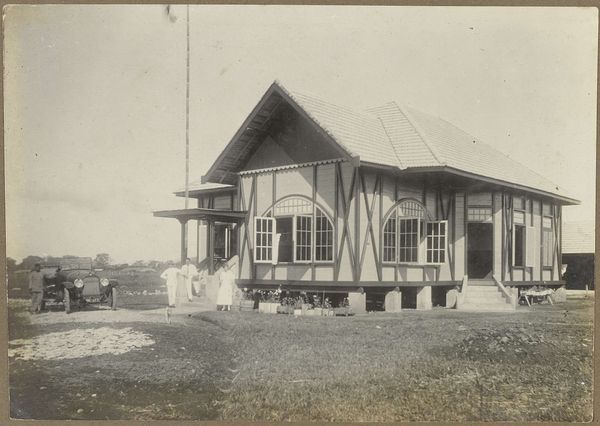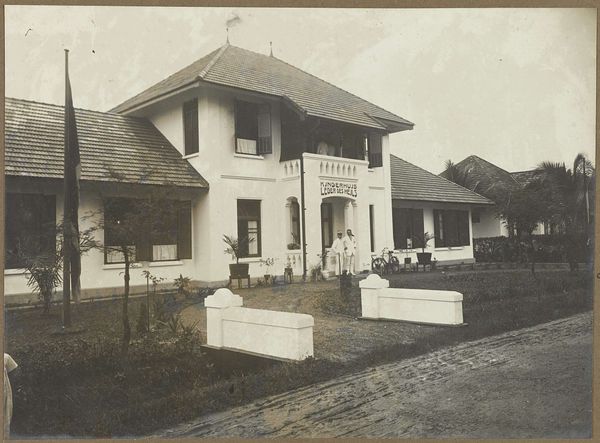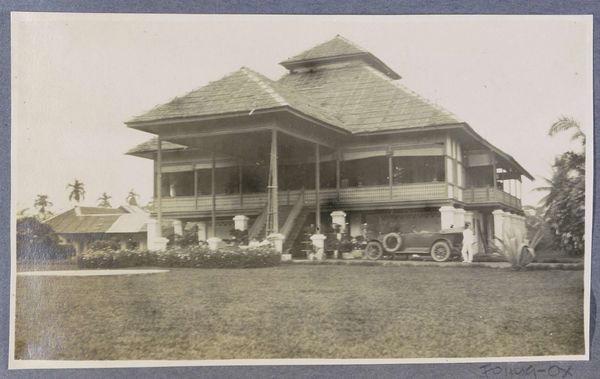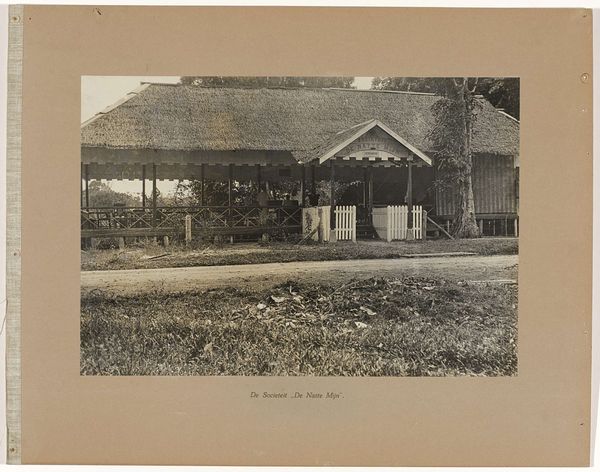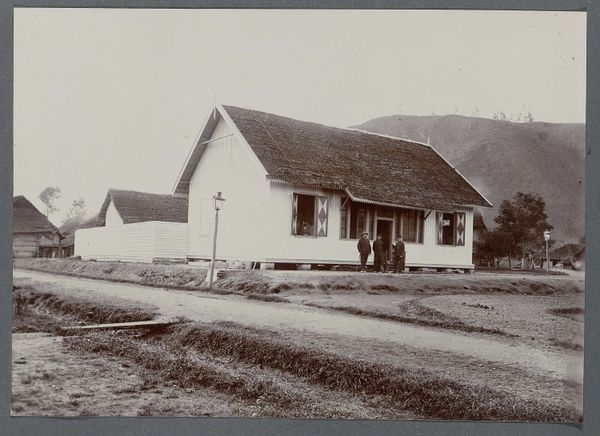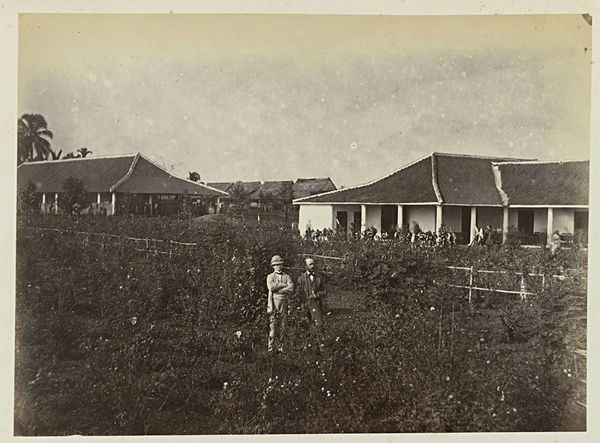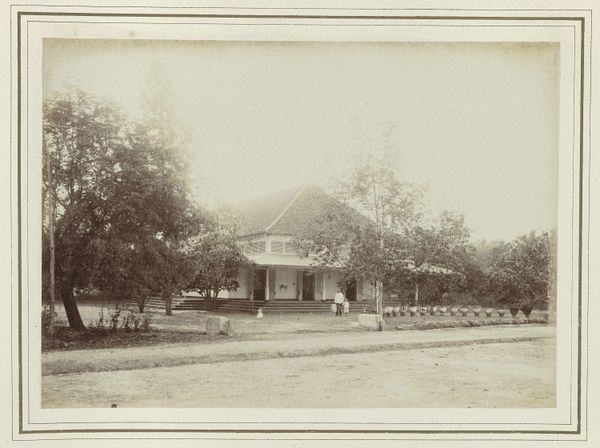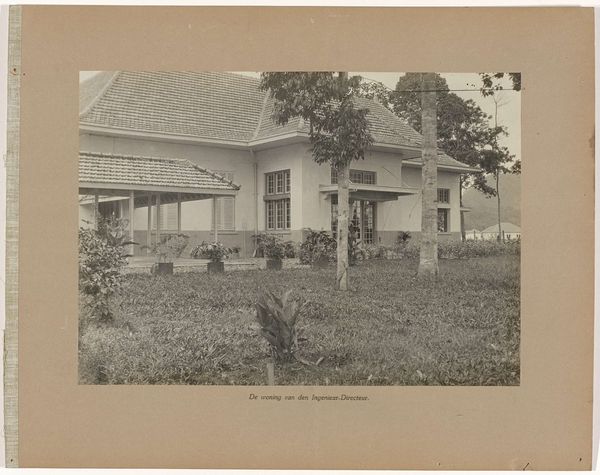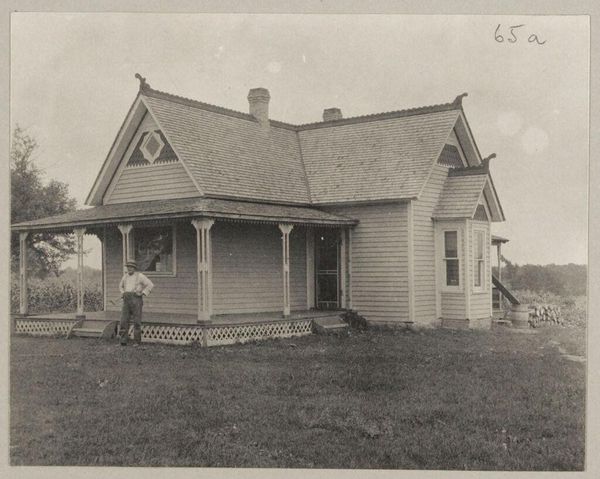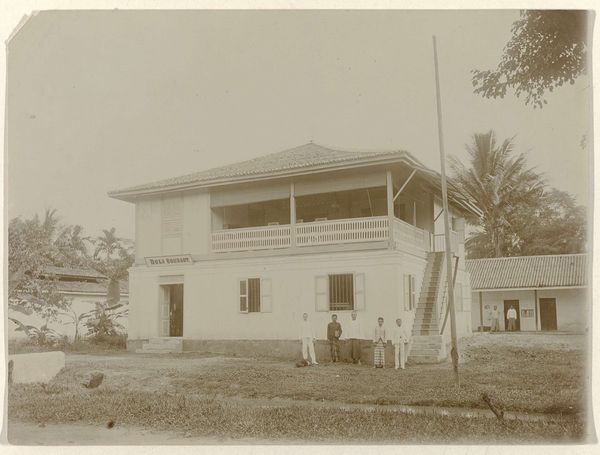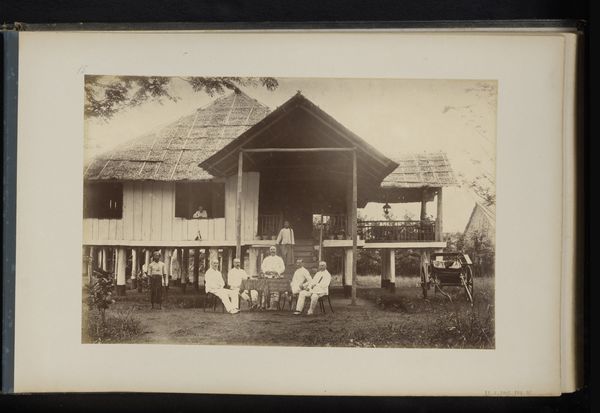
mixed-media, plein-air, photography, site-specific
#
portrait
#
mixed-media
#
plein-air
#
landscape
#
photography
#
site-specific
Dimensions: height 118 mm, width 166 mm
Copyright: Rijks Museum: Open Domain
Curator: The stillness in this image, "Buitenhuis te Berastagi," captured sometime between 1914 and 1919, immediately strikes me. The monochromatic palette imbues the scene with a sense of distance, a separation from the present. What is your initial reaction? Editor: My eye is drawn to the veranda, and the people relaxing there, but I also noticed the use of elevated construction - it gives the building a visual fragility, contrasting with the seeming solidity of the design, that also creates a shadow and changes the composition. Curator: That shadow definitely deepens the historical weight. This image likely depicts a Dutch colonial residence in Berastagi, North Sumatra. We must consider the socio-political context: The 'Buitenhuis', literally 'outside house', implies leisure and privilege afforded by colonial power, while Indigenous communities likely bore the economic burdens. Editor: Absolutely. It becomes crucial to question the symbols. For example, those rattan chairs, occupied by what we can presume are European colonizers – they symbolize not only their comfort but also the displacement and exploitation of local craftsmanship. What looks like an idyllic moment is steeped in a complex system of colonial governance. Curator: The formal composition, the way the figures are arranged in relation to the architecture and landscape, underscores this very power dynamic. Consider the gaze, their bodies facing the camera and away from the landscape: it reinforces ideas of ownership. Editor: And think of the 'site-specific' nature. This isn’t just a portrait; it’s a landscape intricately intertwined with social meaning, and thus memory and time. We see the imposed European idea of the home transported into another land with local or appropriated material, revealing complex narratives that shift with time. Curator: The very act of photographing such a space underscores this dynamic. Who is taking the picture and for what reasons? Was it meant to promote colonial ideals, or was there an anthropological interest? Whose history do we tell? This is the crucial discourse we must interrogate. Editor: I agree. By analyzing these layered significations of culture, social context, design, and the very act of recording, we unveil this image's potency to embody privilege but also the weight and passage of the history within. It becomes a fascinating visual fragment ripe with symbolism.
Comments
No comments
Be the first to comment and join the conversation on the ultimate creative platform.
